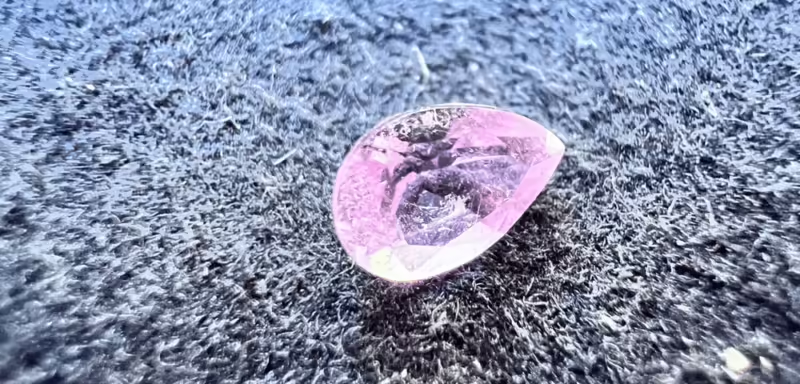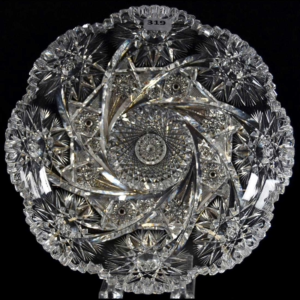Elbaite: Properties, Uses and Virtues
Elbaite: The most sought-after tourmaline
Elbaite is a variety of tourmaline celebrated for its dazzling palette of colors and metaphysical properties. It alone accounts for the majority of tourmaline gemstones sold on the market!

Elbaite: Table of contents
- Elbaite Geological Formation
- Rough Elbaite – Raw Beauty Revealed
- Sources – The Global Reach of Elbaite
- Historical Significance of the Elbaite – Through the Ages
- Metaphysical Properties of Elbaite – Illuminating Energies
- Elbaite varieties
- Colors of Elbaite
- Durability and Wearability of Elbaite
- Elbaite Improvements – Preserving Natural Beauty
- Synthetic Elbaite – Nature in the Laboratory
- Imitations of the Elbaite – Discerning the Authentic
- Elbaite Care – Preserving natural beauty
Elbaite Geological Formation
Elbaite, a member of the tourmaline family, forms in specific geological conditions, often within veins of pegmatite and granitic rocks.
The complex interplay of chemical elements and pressure variations produces Elbaite’s exquisite range of colors, making it a gem of unrivalled beauty.
Rough Elbaite – Raw Beauty Revealed
Uncut Elbaite crystals reveal a raw, authentic beauty that captivates collectors and connoisseurs alike.
These crystals are often elongated and display unique rhombohedral prismatic shapes with distinct striations along their length.
These prisms are often composed of 3, 6 or 9 faces.
Sources – The Global Reach of Elbaite
Elbaite’s enchanting presence extends across the globe, with notable sources including Brazil, Madagascar, Afghanistan and Nigeria. Each location contributes unique variations in color and quality to this captivating variety of tourmaline, enriching the diversity of Elbaite’s offering.
Historical Significance of the Elbaite – Through the Ages
The historical importance of Elbaite is intertwined with the wider story of tourmaline.
Initially confused with other gemstones because of its different colors, elbaite was recognised as a distinct mineral in the 19th century. Its name comes from the island of Elba, where one of the first recognised Elbaite crystals was discovered.
Throughout history, Elbaite has adorned jewellery, amulets and talismans, symbolising protection, healing and spiritual growth.
Elbaite is today’s most sought-after gem-quality tourmaline, offering the widest spectrum of colors and clarity.
It has become widely known for its varieties and trade names such as Rubellite, Paraïba, Watermelon and Indicolite.
Metaphysical Properties of Elbaite – Illuminating Energies
Elbaite’s metaphysical properties are a harmonious blend of tourmaline’s energies and its specific color vibrations. It is believed to promote balance, emotional healing and transformation.
The different colors of Elbaite are associated with different chakras and spiritual intentions, offering a range of energies for personal growth and well-being.
Elbaite varieties
Elbaite captivates with its kaleidoscope of colors, each variety radiating its own unique brilliance:
Rubellite: At the heart of the Elbaite spectrum lies Rubellite, a jewel of red hues. Its variations range from deep crimson to soft pinkish-red, making it a popular choice for jewellery that touches the heart.
Indicolite: Indicolite captures the serene beauty of both the ocean and the sky with its range of blue and green hues.
Watermelon: The elbaite watermelon tourmaline has an original play of colors, with an interior that changes from bright pink to a soothing green, reminiscent of the summer fruit whose name it bears. This gem is also rare and highly prized.
Paraïba: The famous Paraïba tourmaline dazzles with its electrifying blue and green hues, reminiscent of tropical waters in the sunlight. Also known as cupriferous elbaite, it owes its characteristic color to the presence of copper in its chemical composition. This characteristic gives it hues ranging from blue-green to deep green, making it a highly prized and very rare gemstone in the world of jewellery.
Pink elbaite tourmaline: From very pale pink to deeper pink, it borders on rubellite.
Verdelite: From brown-green to all shades of green.
Yellow elbaite tourmaline: all shades of yellow.
Achroite: Quite rare, achroite is a transparent, colorless tourmaline.
Colors of Elbaite
Depending on its variety, elbaite tourmaline can take on shades of red, pink, green and blue in all its variations. It’s one of the most diverse of all stones.
Durability and Wearability of Elbaite
Elbaite has impressive durability, with a hardness of 7 to 7.5 on the Mohs scale. Its resilience ensures that its beauty remains intact over time, making it a perfect choice for a wide range of jewellery designs.
Elbaite Improvements – Preserving Natural Beauty
Tourmaline can be heat-treated to lighten certain shades and create rarer colors. This treatment is not detectable but is stable
Alternatively, irradiation can also be used to create bright hues of warm colors such as yellow, pink or red. This treatment can fade in the light and is not detectable.
Colorants, coatings and fillers can also be used to change the color or fill fractures.
Fillings are generally stable, but the resin tends to yellow over time.
Dyes and coatings are generally not stable.
Please visit each variety page for more information.
Synthetic Elbaite – Nature in the Laboratory
Creating synthetic Elbaite is a challenge, making laboratory-grown varieties rare.
Most of the “synthetic Elbaites” on the market are probably imitations or other artificial materials that mimic its vibrant colors and shine.
Imitations of the Elbaite – Discerning the Authentic
To guarantee the authenticity of Elbaite, it’s crucial to keep an eye out for imitations that might try to reproduce its captivating colors. Common imitations include tinted quartz or other colored gemstones.
Acquiring Elbaite from reputable sources and verifying its origin helps to ensure that you are getting a genuine gemstone.
Please visit each variety page for more information.
Elbaite Care – Preserving natural beauty
Caring for Elbaite jewellery involves gentle cleaning with soapy water and a soft brush.
It is important to avoid exposure to aggressive chemicals and extreme temperatures.
Storing Elbaite separately from other gemstones prevents scratches, ensuring that its elegance endures.
Regular care and professional cleaning help maintain its brilliance over generations, making Elbaite a treasured gem that stands the test of time.


Leave a Reply
Want to join the discussion?Feel free to contribute!